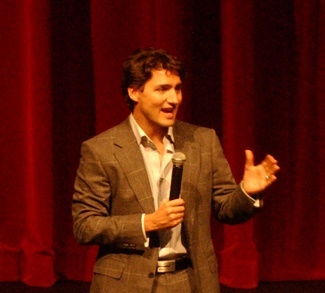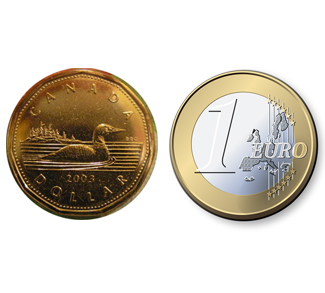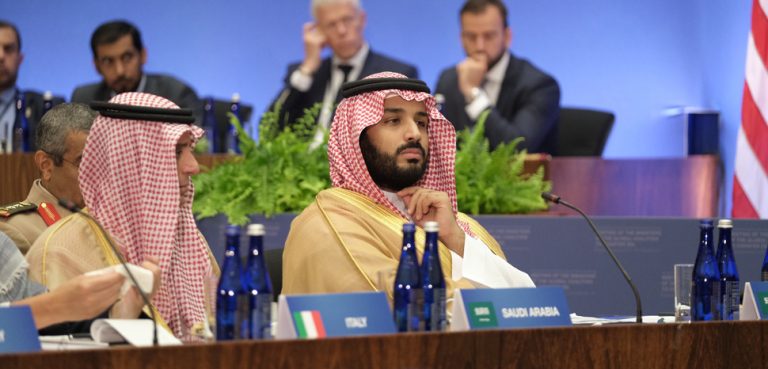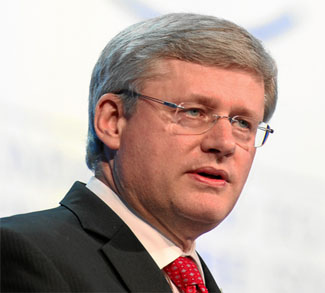Canada’s foreign policy has become much more activist over the past decade, a reaction not to a changing world, but to a transforming domestic political economy. Support has shifted from multilateralism, soft power, and international peacekeeping, to bilateral trade and the projection of military hard power. Stephen Harper’s government has taken a tough stance on democracy and human rights violations in Sri Lanka and Russia, significantly increased defense spending in absolute terms (although this has recently plateaued), and initiated plans to militarize the Arctic, exemplified by the ongoing Operation Nanook.
This contrasts sharply with Canada’s great post-war foreign policy achievements. Canada played a key role in ending apartheid in South Africa; establishing treaties like the ban on anti-personnel mines; helping to establish the International Criminal Court; and Canadian and former McGill law professor John Humphrey wrote the UN Universal Declaration of Human Rights.
The leader of the Liberal Party, traditionally the party advocating a balanced approach to the Middle East, recently highlighted this transformation. Justin Trudeau has voiced strong support for Israel during the recent Gaza conflict, echoing Prime Minister Harper. Both have condemned Hamas as a terrorist organization for their attacks on civilians. Both have emphasized Israel’s right to defend itself and its people through whatever means necessary. In contrast, the White House recently expressed concerns over mounting Palestinian civilian casualties.
That the Liberal Party is increasingly falling in line with the Conservative Party’s more activist approach extends further than the recent conflict in Gaza. There has been little real opposition to the government’s activist and aggressive anti-Russian rhetoric in the face of the Ukrainian crisis. Nor was there any real opposition to the recent closure of CIDA, the Canadian International Development Agency, a move that highlights the government’s prioritization of bilateral trade agreements over multilateral objectives.
Why is this the case?
There has been great domestic economic and demographic change during this evolution. Domestic political power has shifted from the traditionally Liberal bastion of southern and urban Ontario and Quebec, which have tended to hold the foreign policy views articulated by previous governments, to western Canada, namely Alberta, and to a lesser extent the prairie provinces, and more suburban, rural, and northern parts of Ontario and Quebec. Comparing 2011 and 2006 election results, Ontario has 80% fewer Liberal MPs and 83% more Conservatives, Quebec has almost 50% fewer Liberals, British Columbia has 11% more Conservatives and 78% fewer Liberals, and Manitoba has 20% more Conservatives and 66% fewer Liberals.
Additionally, provinces are in the process of redistricting for the 2015 election. New districts will reflect zero-sum internal migration due to energy and commodity-based economic growth. Alberta and British Columbia’s populations, and thus their political importance, have proportionally increased to a much greater extent than Ontario and Quebec. British Columbia and Alberta have 17% and 21% more seats, respectively, while Ontario and Quebec have 14% and 4% more, respectively. Although the latter two provinces still dominate, given their larger populations, political shifts and redistricting within the two have made the political makeup and foreign policy outlook of new ridings in Ontario similar to those in Alberta and British Columbia.
This is because many of the new districts will be in more conservative areas. Alberta will create semi-rural, energy-oriented ridings like Peace River new Fort McMurray. British Columbia will amalgamate traditionally NDP-leaning ridings to create new ridings in more suburban or affluent areas in the Lower Mainland that tend to vote Conservative, such as the merger of Burnaby-Douglas, Newton-North Delta, and New Westminster-Coquitlam to allow for the creation of Richmond-Delta. Ontario will create new ridings that tend to be more suburban and consolidate Conservative gains in Ontario.
Several demographic trends have coincided with these developments. Traditionally Liberal areas in Ontario, Quebec, and British Columbia have seen an influx of immigration from South and Southeast Asian countries, although Quebec tends to accept higher numbers of immigrants from Africa. These regions tend to be more hawkish abroad and their emigrants more focused on business issues rather than intangible, less politically marketable things like peacekeeping and multilateralism. They have also settled in areas that tend to vote Conservative, such as ridings in the Scarborough area of the GTA and Mississauga.
These trends directly contributed to Prime Minister Harper’s recent boycott of the Commonwealth Heads of Government meeting in Sri Lanka, an organization of mostly developing countries and where Canada is the second largest financial contributor. In contrast, Australia’s Prime Minister, Tony Abbott, who pledged ‘to stop the boats’ and whose government has held 157 Sri Lankan asylum-seekers at sea in an undisclosed location for the past several months, attended because ‘you do not make new friends by rubbishing [or abandoning] your old friends.”
These trends directly contributed to Prime Minister Harper’s recent boycott of the Commonwealth Heads of Government meeting in Sri Lanka, an organization of mostly developing countries and where Canada is the second largest financial contributor.
The growing provinces and regions tend to be more concerned about external trade development, given that what they export – mainly energy, commodities, manufactures, and certain foodstuffs – is generally sent abroad rather than consumed domestically. This contrasts with southern and more urban Ontario and Quebec, which are markedly more service-based and whose manufacturing base is heavily integrated with the northeastern United States. Ontario’s economy is composed of roughly 77% service-based firms and 12% manufacturing-oriented firms, where automotive exports to the United States and overseas dominate. In contrast, Alberta’s economy is 56% service-based and 31% manufacturing and energy-oriented. These industries tend to export abroad, given the decreased American market due to recent growth in the American natural gas market and ongoing delays for the Keystone XL pipeline.
The federal government has reinforced these trends by seeking to diversify its export markets away from the United States. The recent negotiations of TTIP and CETA are prominent examples. CETA negotiations have reduced tariffs on manufactures and agriculture by almost 100%, mainly benefiting western Canada and suburban and rural Ontario and Quebec. Potential gains for southern Ontario and Quebec from external trade deals are less explicit. Services are difficult to negotiate in free trade discussions, and it is estimated that consensus and implementation will take up to two years.
Looking backwards and forwards
These factors have crystallized Canadian foreign policy. They have also forced Trudeau and the Liberals to shift their views to be more in line with the Conservatives in order to capture more of the national vote. This incentive is especially apparent given how abysmal the Liberals did last federal election, where they lost 66 seats. The current government’s policies, while more hawkish abroad, accurately reflect the Canadian domestic political landscape. Trudeau’s shift to what have been traditionally Conservative foreign policy views is more about political pragmatism during the run up to an election. Although Trudeau might replace the increasingly unpopular Harper, the latter’s foreign policy legacy is likely to remain given current demographic and economic trends. Canadians should not be shocked.




